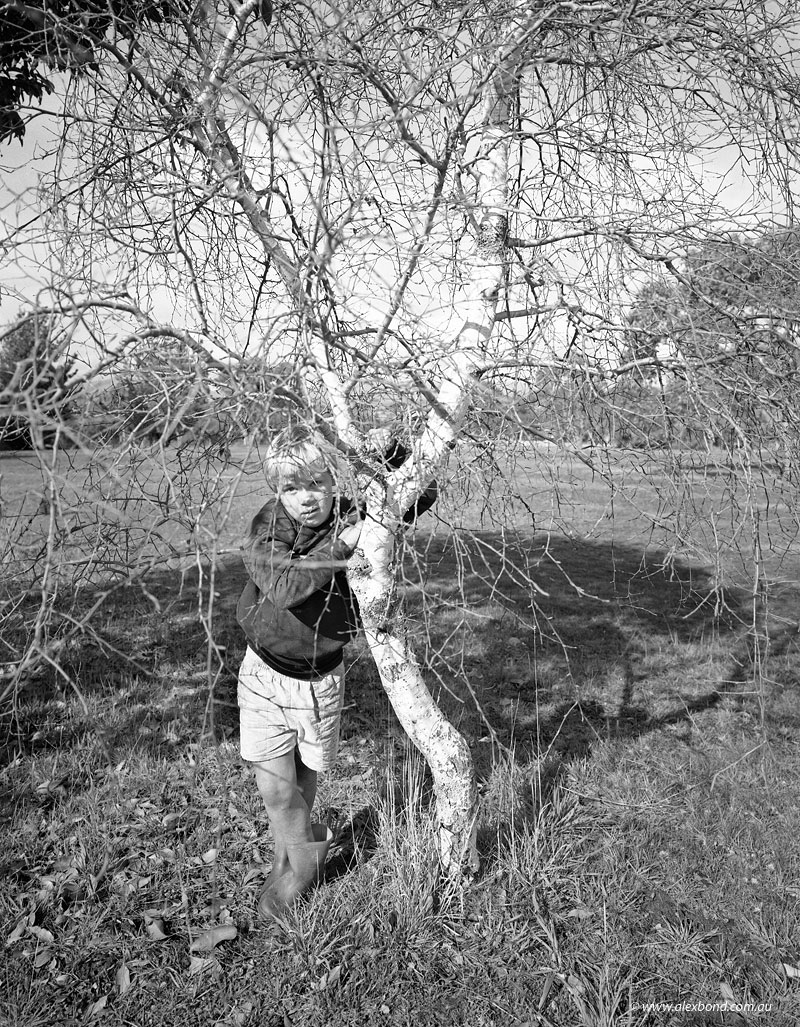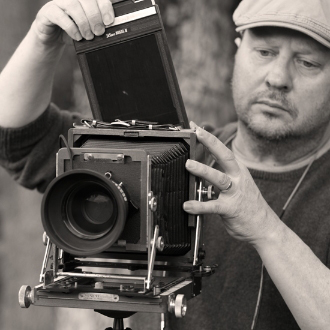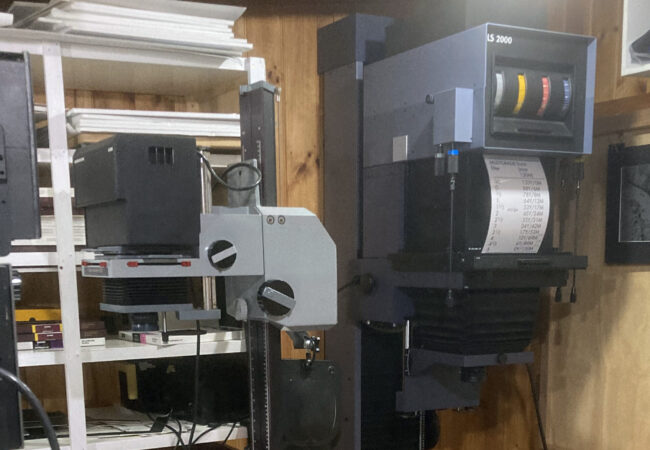The third and final chapter in Janet Naismith & Gary…

The Photograph Considered number thirty three – Alex Bond
Woven in Time
It was 1988 and I had just arrived for what would be a twelve month period on the north west coast of Tasmania. I had found some digs to rent, a fibro house in a rural setting, east of Devonport, on the Rubicon Inlet.
Months had passed since my travels from Western Australia, and I was eager to unpack my 4×5 camera, which had travelled with me.
My budget was on a shoestring. After telephoning around Tasmanian camera shops for 4×5 black and white film to no avail, I finally decided I had to get it from the “mainland”. I purchased 2 boxes of 4×5 Ilford HP5 from a camera store in Melbourne. Those 100 sheets lasted me all year.
At the front of my house was an open paddock lined with a various ornamental trees. Desperate to open the new film stock and try it out, I chose a nearby silver barked tree as a subject. Uppermost in my mind, I just wanted to ensure that film, camera and light-meter were all working after a period of hibernation.
The afternoon sun certainly lacked the heat intensity that I was use to back West. The shadows cast were long and cool. It was only mid-afternoon. I strolled over to the tree in my front yard and set up my tripod. Next, I unfolded my wooden field camera and placed it on top.
Out of the corner of my eye I noticed a young boy from a neighboring home was watching me intently as I assembled my camera. I placed my one and only 4×5 lens, a 90mm wide-angle, onto the camera and stuck my head under the focus cloth.
Bringing the tree into focus on the ground glass back something, unexpected appeared. The boy, seeing I was busy with my head under the focus cloth, decided to walk over to the tree and take a closer look at this strange spectacle before him. Leaning comfortably against the tree, he stared intently at the camera with curiosity.
I came out from under the focus cloth. The boy stared silently. I closed the lens and set the aperture. Reaching for my double dark loaded with the HP5, I had fully expected him to move by the time I looked up again. I loaded the camera, removed the dark slide and looked to the tree. The boy had not moved. I pressed the cable release and made the exposure.
I did not have a darkroom. My workflow at the time consisted of developing the sheet film with inversion agitation in a newly acquired Jobo daylight processing drum. Any assessment of the developed negatives was restricted to holding them up to the light and inspecting them by eye. It would be several months later, in a borrowed darkroom space, that I first saw a positive 4×5 inch contact print from that day. As I did not have a 4×5 enlarger until I returned to Perth, it would be years before I saw an enlarged positive image.
There is a small irony within this photograph. The spindly branches of the tree partially obstruct a clear view of the boy’s face. This partial obstruction intensifies the viewer’s gaze towards the boy’s presence in the photograph. Curiosity has transferred from that of the subject to that of the viewer.
It is also a reminder of the power of the photographic medium that makes it unique. Photographs of events, people, landscapes, and even the celestial stars are all but fractions of a second that capture the past.

Alex Bond is a Perth based landscape photographer who enjoys working with 4×5 black and white film. His style has been crafted over decades of hiking with his wooden field camera. Alex runs small workshops on large format black and white photography and traditional darkroom printing. He can be contacted at www.alexbond.com.au
The Photograph Considered number two by Alex Bond can been seen here.
Next Post: Lockdown exhibitions
Previous Post: The Photograph Considered number thirty four – Ellie Young




Loved the article Alex, it reminds me that photography always has the element of chance and dare I say it even luck.
Some things you can’t organise or control and events like this are rare ……
But rewarding when they happen.
Thanks for sharing!
Hi Brian, yes you are right, sometimes you need to be “just ready” and flexible enough to be aware of a situation change to your (the photographer’s) intended composition.
Thanks for your insightful comment.